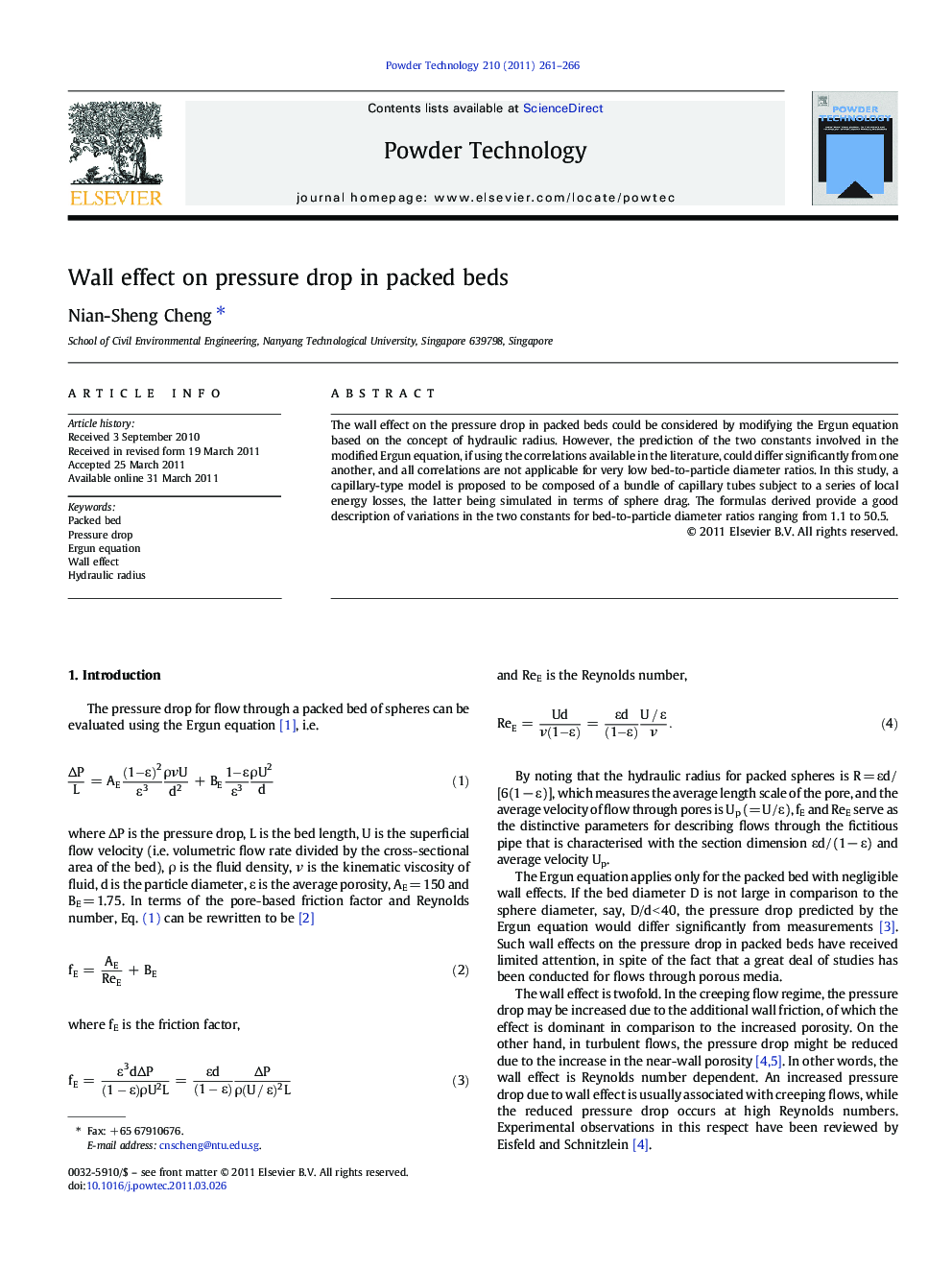| Article ID | Journal | Published Year | Pages | File Type |
|---|---|---|---|---|
| 237574 | Powder Technology | 2011 | 6 Pages |
The wall effect on the pressure drop in packed beds could be considered by modifying the Ergun equation based on the concept of hydraulic radius. However, the prediction of the two constants involved in the modified Ergun equation, if using the correlations available in the literature, could differ significantly from one another, and all correlations are not applicable for very low bed-to-particle diameter ratios. In this study, a capillary-type model is proposed to be composed of a bundle of capillary tubes subject to a series of local energy losses, the latter being simulated in terms of sphere drag. The formulas derived provide a good description of variations in the two constants for bed-to-particle diameter ratios ranging from 1.1 to 50.5.
Graphical abstractThe wall effect on the pressure drop in packed beds could be considered by modifying the Ergun equation based on the concept of hydraulic radius. A capillary-type model is proposed to be composed of a bundle of capillary tubes subject to a series of local energy losses, the latter being simulated in terms of sphere drag. The formulas derived provide a good description of measured variations in the two constants involved in the modified Ergun equation for a wide range of bed-to-particle diameter ratios.Figure optionsDownload full-size imageDownload as PowerPoint slideResearch highlights► Wall effect on the pressure drop in packed beds is investigated. ► A capillary-type model is proposed with local energy loss being simulated in terms of sphere drag. ► Two coefficients of the Ergun equation are evaluated for a wide range of bed-to-particle diameter ratios.
